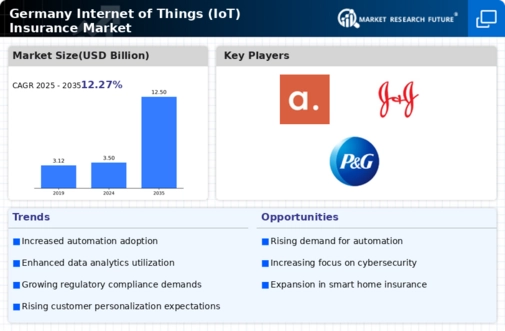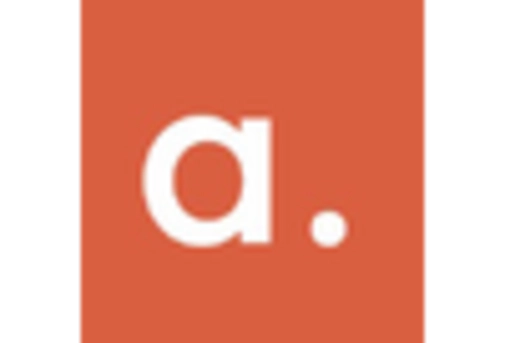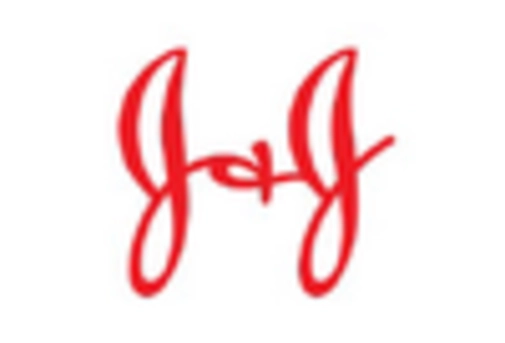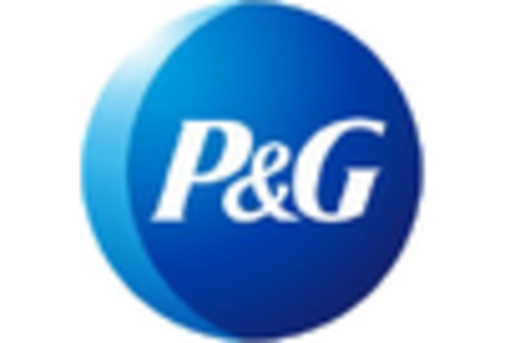Market Growth Projections
The Global Germany Internet of Things (IoT) Insurance Market Industry is poised for substantial growth, with projections indicating an increase from 3.5 USD Billion in 2024 to 12.5 USD Billion by 2035. This growth trajectory suggests a compound annual growth rate of 12.27% from 2025 to 2035, reflecting the increasing demand for insurance solutions tailored to IoT devices. As businesses continue to adopt IoT technology, the market is expected to evolve, presenting opportunities for insurers to innovate and expand their offerings in response to emerging risks and challenges.
Rising Adoption of IoT Devices
The increasing proliferation of Internet of Things devices across various sectors is a primary driver for the Global Germany Internet of Things (IoT) Insurance Market Industry. As organizations integrate IoT technology into their operations, the demand for insurance products tailored to these devices rises. In 2024, the market is projected to reach 3.5 USD Billion, reflecting the growing recognition of the need for coverage against potential risks associated with IoT devices. This trend is likely to continue, as businesses increasingly rely on connected devices, thereby creating a larger pool of insurable assets.
Increased Cybersecurity Threats
The rise in cybersecurity threats targeting IoT devices is a critical factor driving the Global Germany Internet of Things (IoT) Insurance Market Industry. As cyberattacks become more sophisticated, organizations recognize the necessity of protecting their connected assets. Insurance products that cover cyber risks associated with IoT devices are increasingly sought after. This trend is underscored by the projected market growth from 3.5 USD Billion in 2024 to an anticipated 12.5 USD Billion by 2035, indicating a compound annual growth rate of 12.27% from 2025 to 2035. Companies are likely to invest in insurance solutions to mitigate potential financial losses from cyber incidents.
Growing Awareness of Risk Management
There is a burgeoning awareness among businesses regarding the importance of risk management in the context of IoT deployments. This awareness is a significant driver for the Global Germany Internet of Things (IoT) Insurance Market Industry. Organizations are increasingly recognizing that while IoT technology offers numerous benefits, it also introduces various risks that require effective management. As a result, companies are actively seeking insurance solutions that can provide coverage for potential liabilities and losses associated with IoT devices. This trend is expected to bolster the market, as businesses prioritize comprehensive risk management strategies.
Regulatory Compliance and Data Security
The stringent regulatory landscape surrounding data protection and privacy in Germany significantly influences the Global Germany Internet of Things (IoT) Insurance Market Industry. Companies are compelled to comply with regulations such as the General Data Protection Regulation (GDPR), which necessitates robust insurance solutions to mitigate risks associated with data breaches and cyber threats. As organizations seek to safeguard their operations and customer data, the demand for specialized IoT insurance products is expected to grow. This regulatory pressure may contribute to the market's expansion, as businesses prioritize compliance and risk management.
Technological Advancements in Insurance Solutions
The continuous evolution of technology within the insurance sector is facilitating the growth of the Global Germany Internet of Things (IoT) Insurance Market Industry. Innovations such as artificial intelligence, machine learning, and data analytics are enabling insurers to develop more tailored and efficient IoT insurance products. These advancements allow for better risk assessment and pricing models, making insurance more accessible and relevant to businesses utilizing IoT technology. As insurers leverage these technologies, the market is likely to expand, catering to the diverse needs of organizations adopting IoT solutions.














Leave a Comment